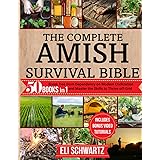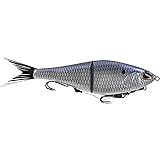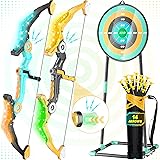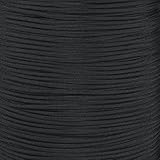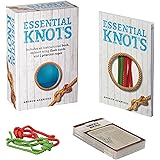The Ultimate Campfire Potato Egg Cheese Meal: A Rustic Culinary Delight
For many outdoor enthusiasts, the challenge of preparing a truly satisfying and delicious meal in a wilderness setting can often seem daunting. Limited equipment, the need for efficiency, and a desire to move beyond basic rations frequently lead to a search for innovative yet simple cooking solutions. Fortunately, as eloquently demonstrated in the accompanying video, an exceptional solution exists in the form of a wholesome and easy-to-prepare campfire potato egg cheese meal, offering a perfect blend of rustic charm and hearty nourishment.
This ingenious recipe transforms humble ingredients into a culinary triumph, proving that gourmet flavors are attainable even under the open sky. The process, while straightforward, involves several nuanced steps that, when executed correctly, culminate in a perfectly baked potato filled with gooey cheese and a beautifully cooked egg. This method not only simplifies outdoor cooking but also elevates the entire camp dining experience, making it a staple for any adventure.
Mastering the Art of the Potato Bowl: Preparation is Key
The foundation of this exceptional campfire potato egg creation lies in the meticulous preparation of the potato itself. Initially, a sturdy, medium-to-large potato is selected; russets or baking potatoes are typically preferred due to their robust structure and ability to hold their shape during cooking. Subsequently, the top third of the potato is carefully sliced off lengthwise, creating a distinct “lid” and a larger base piece. This precision cut is paramount, as it establishes the framework for the edible bowl.
Following this, the larger potato segment is expertly carved out, transforming it into a functional receptacle. While a dedicated spoon certainly facilitates this hollowing process, a keen eye and a steady hand with a knife can also achieve the desired bowl shape. The objective is to create sufficient space for the fillings without compromising the structural integrity of the potato wall, ensuring it can withstand the heat of the coals. This prepared potato bowl serves as a natural, edible cooking vessel, showcasing resourcefulness in outdoor culinary practices.
Crafting Your Hearty Core: Eggs, Cheese, and Flavorful Additions
With the potato bowl meticulously prepared, attention then shifts to its delectable contents, which transform it into a truly hearty campfire potato egg cheese meal. As shown in the video, quail eggs are delicately cracked and nestled into the potato’s hollow. However, it should be noted that standard chicken eggs can also be employed, perhaps one large egg or two smaller ones, depending on the potato’s capacity. The rich, creamy yolks and firm whites are essential components, providing both protein and succulence.
A generous amount of cheese is then introduced, enveloping the egg in a blanket of savory goodness. Cheddar, Monterey Jack, or a blend of melting cheeses are often chosen for their superior meltability and robust flavor profiles, which significantly enhance the overall experience. Furthermore, this stage presents an opportunity for personalization; a sprinkle of herbs like chives or parsley, a dash of smoked paprika, or even pre-cooked crumbled bacon bits can be incorporated to elevate the dish. These additions act as a treasure chest of flavors, waiting to be unearthed upon consumption.
The Science of Campfire Baking: Achieving Perfection in Coals
The success of this rustic dish hinges upon its proper cooking in the embers of a campfire, a technique that requires careful attention to heat management. Once the potato is filled and its lid is replaced, it is securely wrapped in aluminum foil, forming a protective barrier against direct flame and ash. This foil packet is then carefully placed directly onto hot coals, much like one would prepare a traditional baked potato in a conventional oven. The retained heat within the coals provides a consistent, albeit intense, cooking environment.
The suggested cooking time is approximately half an hour, though this duration can be influenced significantly by the heat intensity of the coals and the size of the potato. Therefore, periodic checks are advisable; the foil packet can be carefully removed and gently squeezed to ascertain the potato’s tenderness. A perfectly cooked campfire potato egg cheese meal will feature thoroughly melted cheese and an egg cooked to your desired consistency, often with a slightly runny yolk if removed at the right moment. Safety precautions, such as using tongs and heat-resistant gloves, are always recommended when handling items within hot coals.
Maximizing Your Ingredients: The “No Waste” Philosophy
A cornerstone of efficient outdoor cooking, and particularly emphasized in the video, is the commitment to a “no waste” philosophy. The potato shavings and remnants from carving out the bowl are not discarded but rather meticulously collected and repurposed. These nutritious pieces are simply wrapped separately in aluminum foil and cooked alongside the main potato boats, ensuring that no edible portion goes to waste. This practice not only demonstrates ingenuity but also maximizes the caloric and nutritional yield from every ingredient.
This approach extends beyond just potato scraps; it encourages campers to think resourcefully about all ingredients used in their wilderness meals. For instance, any leftover cheese or egg can be integrated into other simple dishes, such as a quick scramble or a topping for a cracker. Embracing such a mindset allows for a more sustainable and economically sound camping experience, where every component contributes to the overall sustenance and enjoyment of the adventure. Consequently, the act of cooking becomes an exercise in practical bushcraft.
Variations and Enhancements for Your Campfire Creation
While the core recipe for this campfire potato egg cheese meal is delightfully simple and satisfying, its versatility allows for numerous variations and enhancements, catering to diverse tastes and dietary preferences. For instance, different types of cheese, such as smoked gouda or pepper jack, can be employed to introduce distinct flavor profiles. Furthermore, a layer of sautéed onions or bell peppers could be added to the potato bowl before the egg and cheese, offering additional texture and sweetness.
Protein enthusiasts might consider incorporating pre-cooked elements such as finely diced ham, chorizo, or even a spoonful of chili for a more substantial meal. For those seeking a vegetarian alternative, spinach, mushrooms, or black beans make excellent additions. Upon serving, a dollop of sour cream, a sprinkle of fresh cilantro, or a dash of hot sauce can further elevate the dish, transforming it into a truly personalized culinary experience. This adaptability ensures that the basic concept can be tailored for any occasion or palate, reinforcing its status as an indispensable outdoor recipe.





